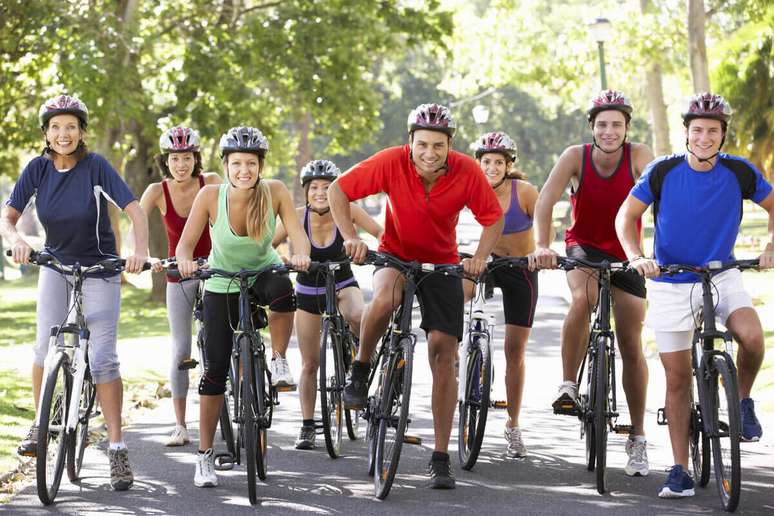Here’s how to make plans to ride a bike!
Credit: Choosing the right path to take prevents accidents (Image: Shutterstock)
We cannot control the driving conditions on the pedals, but being aware can save us from risks and accidents. Every cyclist, when he goes out to pedal, is faced with an essential element, the path he has chosen for the challenge.
Choose the right pedal
First we define whether the route is a race or a pleasure ride, since, mentally, we tend to perceive, in the first environment, a greater pressure to carry it out. In competition, even when we say “I compete, but I don’t care where I stand”, we always have an unconscious need to meet the expectations of others. Generally, we push the speed and intensity of pedaling to get a better result. Already on the leisure pedal, the pressure to go faster is much less; in many cases, it doesn’t even exist.
Consider fitness
A very common mistake occurs when choosing the route, when inexperienced cyclists often choose distances and altitudes that are inadequate for their level of physical and mental preparation. This usually happens through the encouragement of more experienced cyclists who don’t see the real risks that exist in more challenging routes for novice cyclists, convincing them to take them.
Therefore, we must be aware and insightful, because, unlike a competition, your leisure ride does not have a safety and rescue structure to help you, in case of accidents or physical and psychological stress. Therefore, it is always advisable to ask for directions and information on the route chosen to ride.
talk to experts and respect your limit
Consult with more knowledgeable and risk-aware people and, if possible, hire or speak with local guides to reduce the contingencies. In general, don’t choose challenges that are very different from those you’ve already experienced, but if it should happen, don’t expect intensity and speed that exceed your physical and mental condition.

Share your feelings with colleagues
If you don’t feel well physically or psychologically during your rides and notice some anxiety or fear, share it with your friends, surely someone will welcome and reassure you. Afflictions are often related to fantasies that we create mentally, so try to be rational when analyzing the conditions that are occurring.
Get outside help and find a driving partner
When necessary, call for outside help, a rescue, or a ride home. You will be more prudent and will be able to preserve your safety and health. The main guideline is: never ride on unfamiliar routes without having at least one pedaling partner with you and be aware of choosing, planning and performing rides in safety.
Text originally published in Revista Bicicleta (Edition 130).
by Anderson do Prado – Pinduke
Psychoanalyst and Personal Trainer.
Source: Terra
Ben Stock is a lifestyle journalist and author at Gossipify. He writes about topics such as health, wellness, travel, food and home decor. He provides practical advice and inspiration to improve well-being, keeps readers up to date with latest lifestyle news and trends, known for his engaging writing style, in-depth analysis and unique perspectives.







